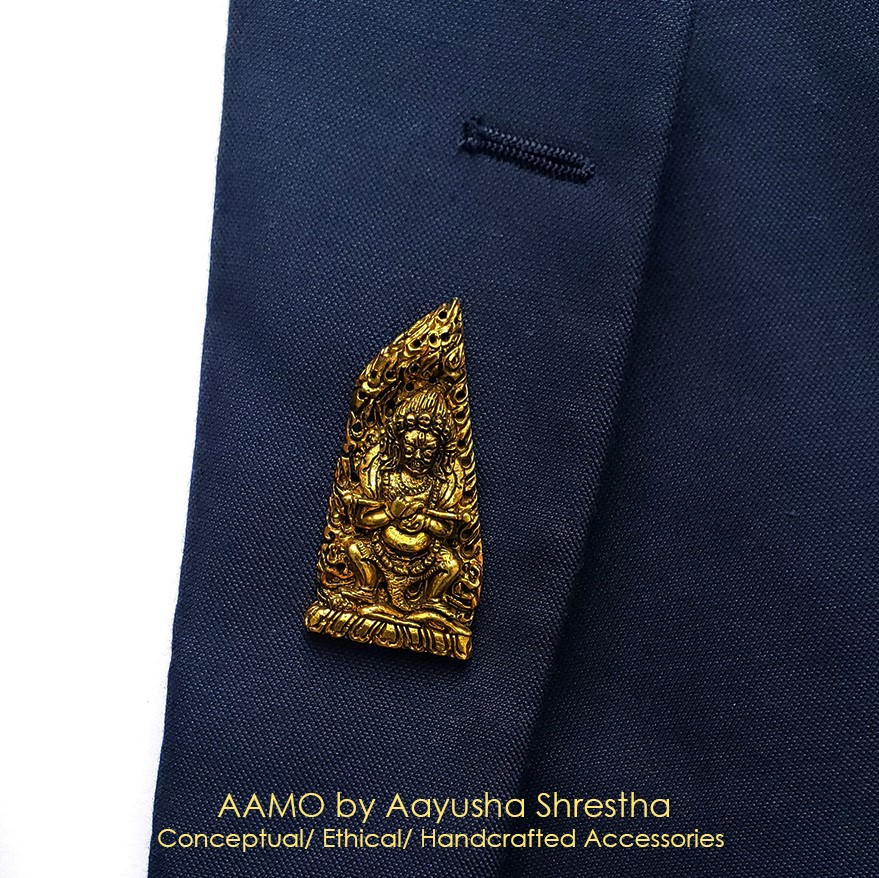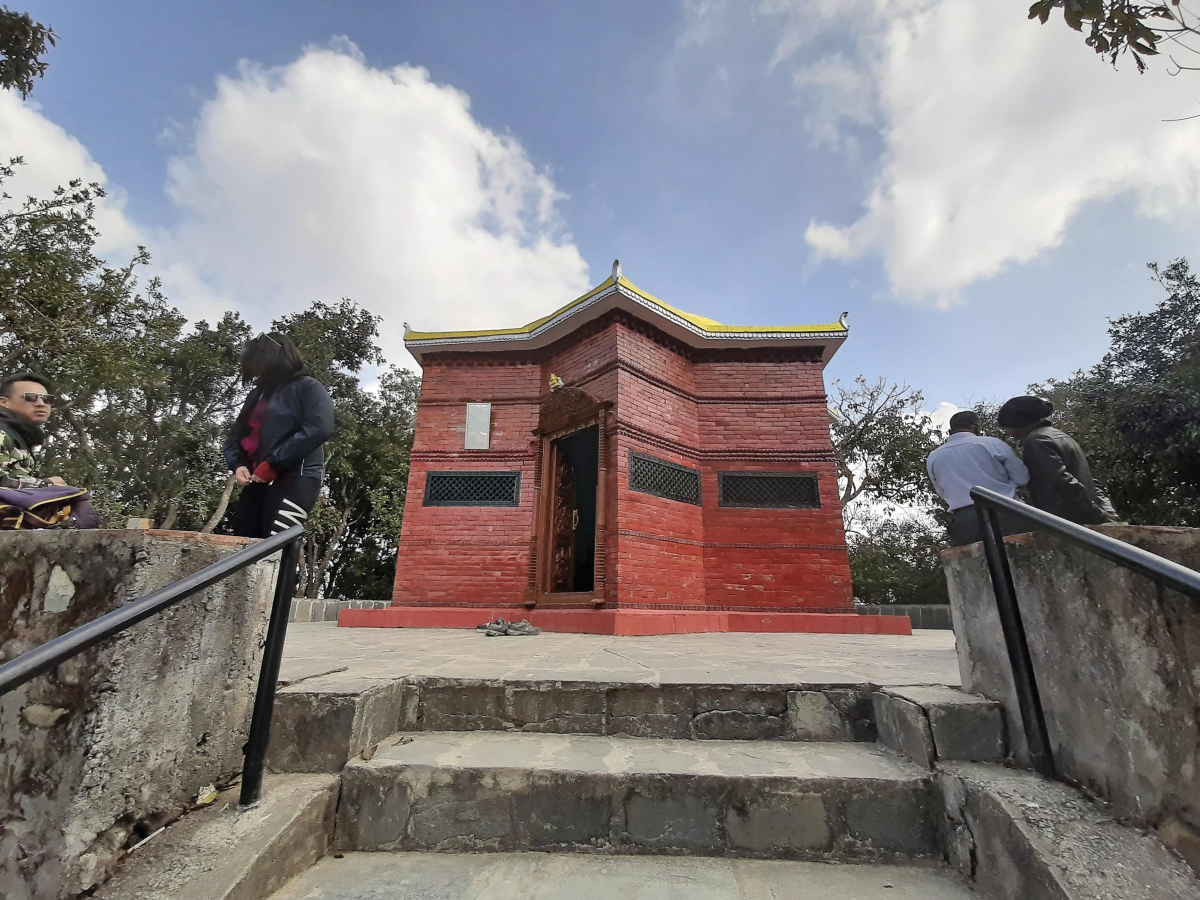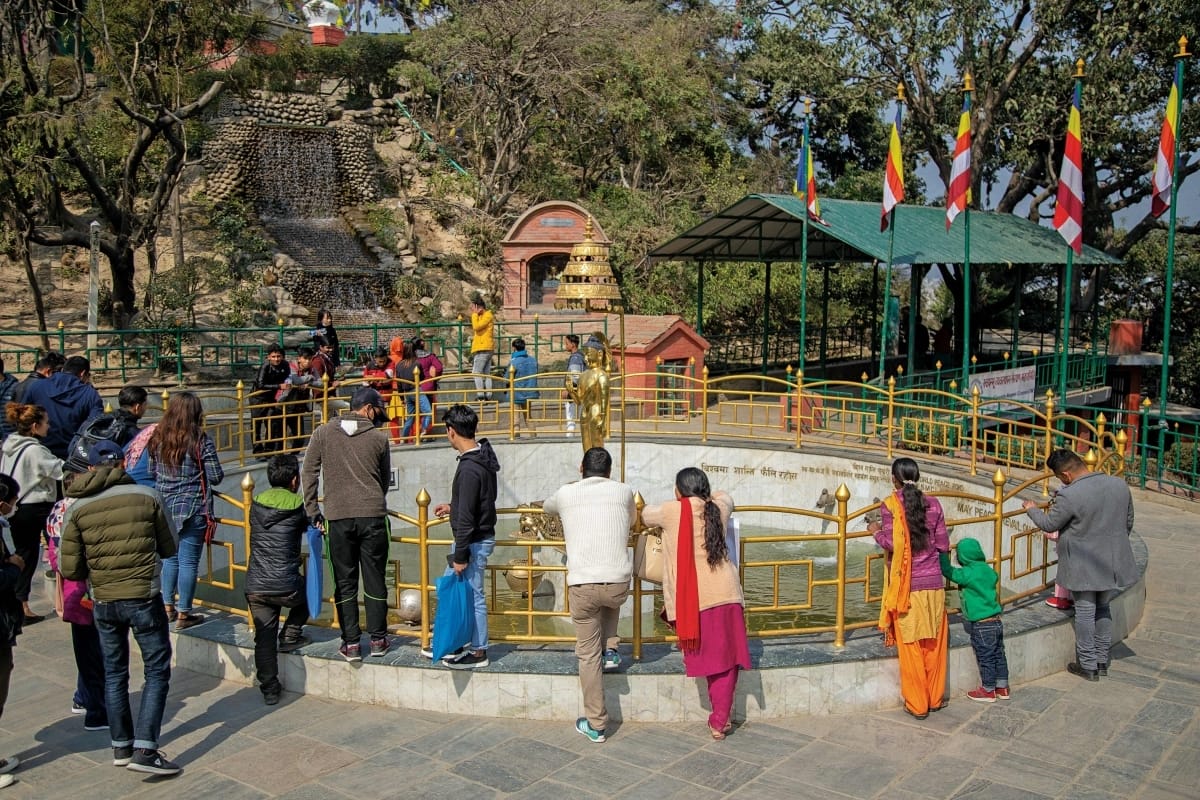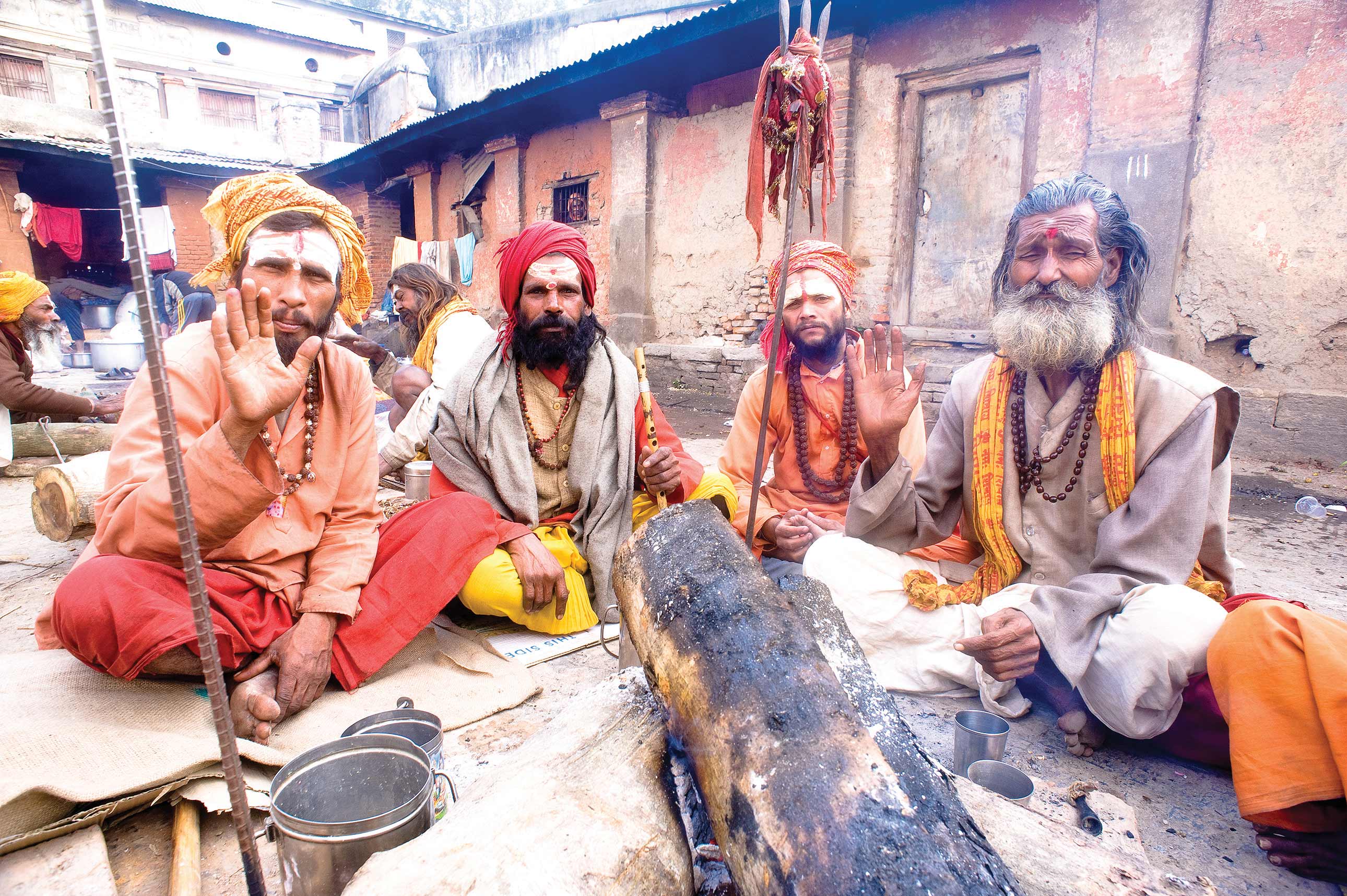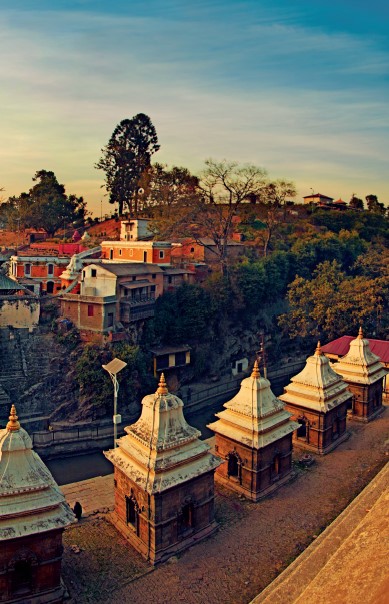
Shivaratri, or the night of Shiva, in my mind, is always associated with the Pashupatinath Temple. The temple was set away from human settlement for a reason—in the midst of the forest, amongst the slightly dilapidated buildings and gently ruined structures of the past, the most perfect followers of Shiva, the sadhus, had an ideal sanctuary. Sadhus, ascetics who’d left behind the material world for more spiritual and transcendental concerns, seemed at home here, with the firewood they received gratis from the king burning away the night in the flicker of bonfires and ash.
They started to arrive a fortnight before Shivaratri, and they piled up amongst the muths and the small shrines, smoking their ganja in blissful torpor, joking with the tourists in their own languages (one Shivaratri I chatted with an elderly and jovial French speaking Baba), holding up rocks with their penises, and in general adding to the madcap ambience of the already otherworldly place. One Shivaratri, we finally managed to enter the inner shrine of Pashupati along with a long line of other devotees, through the gate that leads into the labyrinth. In the main courtyard I waited breathlessly for a glimpse of the fabled Aghori Babas, who inspire awe and fear because they live in the cremation ghats. The Aghori are known to taste human flesh from the corpses in order to battle and transcend their deepest human feeling of revulsion, in order to achieve absolute mental detachment. I was met by the sight of a group of impassive unclothed ash-smeared sadhus who had monopolized the main courtyard for the night. A muscular sadhu stood on one leg in a dramatic posture, naked as the day he was born—with only a golden watch on his wrist as accoutrement. The troupe looked more theatrical than spiritual, but of course that was part of the teeming, heaving maya, or cosmic theater, that constitutes this night of Shiva.
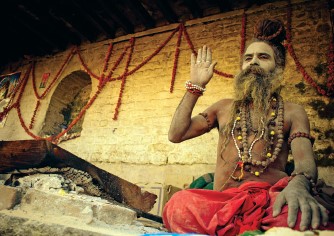 In the past ten years, Shivaratri has become unmanageable, with large groups of young men smoking marijuana and partying it up on the sad and tawdry ashphalt roads surrounding the once awe-inspiring temple. The temple is no longer on the fringes of the urban chaos—it is in the midst of it, surrounded by people who nibbled away at the holy site to build concrete buildings, and from which houses sewage now flows into the holy Bagmati. Young couples seeking a few moments of privacy in this city throw condoms in the Sleshmantak forest, while adolescent boys use the heritage sites for their pot smoking initiation rites. The gentrified hordes jog through the forest, which no longer holds mystique, although the monkeys, thankfully, are still to be found there, causing minor havoc and bringing a level of unpredictability to the devotional experience.
In the past ten years, Shivaratri has become unmanageable, with large groups of young men smoking marijuana and partying it up on the sad and tawdry ashphalt roads surrounding the once awe-inspiring temple. The temple is no longer on the fringes of the urban chaos—it is in the midst of it, surrounded by people who nibbled away at the holy site to build concrete buildings, and from which houses sewage now flows into the holy Bagmati. Young couples seeking a few moments of privacy in this city throw condoms in the Sleshmantak forest, while adolescent boys use the heritage sites for their pot smoking initiation rites. The gentrified hordes jog through the forest, which no longer holds mystique, although the monkeys, thankfully, are still to be found there, causing minor havoc and bringing a level of unpredictability to the devotional experience.
The degradation of the holy temple complex itself seems to echo the ways in which Shivaratri has become a tawdry spectacle of glaring electric lights, uncontrolled crowds, and a carnivalesque turnout of adolescence lost in its search for hedonistic experiences.
Which is why, visiting the Kirateswor Temple complex on Shivaratri was a special joy. Up the steep steps of a hill and into an old courtyard where a baba sits tending his dhuni fire, the music flows like a river as we sit under the peepul tree. On Shivaratri, a group of musicians had assembled under the impeccable hospitality of tabla-player Sarita Mishra, as they did every full moon, where they met up for a “concert”—a few hours of devotional bhajans and kirtans sung on a tiny stage, and to which the audience listen to with rapt attention. Sarita has been organizing full moon concerts at Kirateswor for a long time, but it is in Shivaratri I experienced the full blessings of her beneficence. Sarita beckoned to me and I made my way to the back of the complex. Up the rickety wooden ladder behind the stage and into the attic we went, and up there was a long line of musicians, poets, writers, and artists partaking of the prasad—halwa, puri—the usual fare of spiritual and religious events, but served with grace and simplicity. I remember a sense of time slowing down, of sensing beauty flickering in the shadows, and listening to the voices around me as if they added to the music from down below.
A few years later, when I decided I just couldn’t brave the crowds, I happened to pass by a sweetshop in New Road that was selling bhang burfi a day before Shivaratri. The young proprietor had left the sweets out for display, so obviously there was no fear of legal repercussions—which in my mind is problematic anyway, since bhang has for centuries been associated with Shiva-worship in the subcontinent. Eaten in very small quantities and with respect to tradition, it doesn’t do any harm. Which is how I ended up spending another Shivaratri—in much the way as Shiva, I ended up eating the bhang. The sweet-seller must have used a magic recipe, because all that happened to me was a very deep, relaxing sleep. There were no awful side effects, although with any mind-altering substance this is always a possibility. That sleep seemed to get rid of all my tiredness of the past few years, as if I’d repaired all the damage wrought by insomnia on my system. I felt a very deep sense of relaxation, as if all my worries and anxieties had melted away. You could say that for a few days I felt a connection with the entire cosmos, like a fish swimming in the cosmic ocean, in the vastness of the depths. While the effect melted away after a few days, I felt an expansiveness and opening that I hadn’t felt before—a broadening of consciousness towards a larger cosmos than the one we take for granted
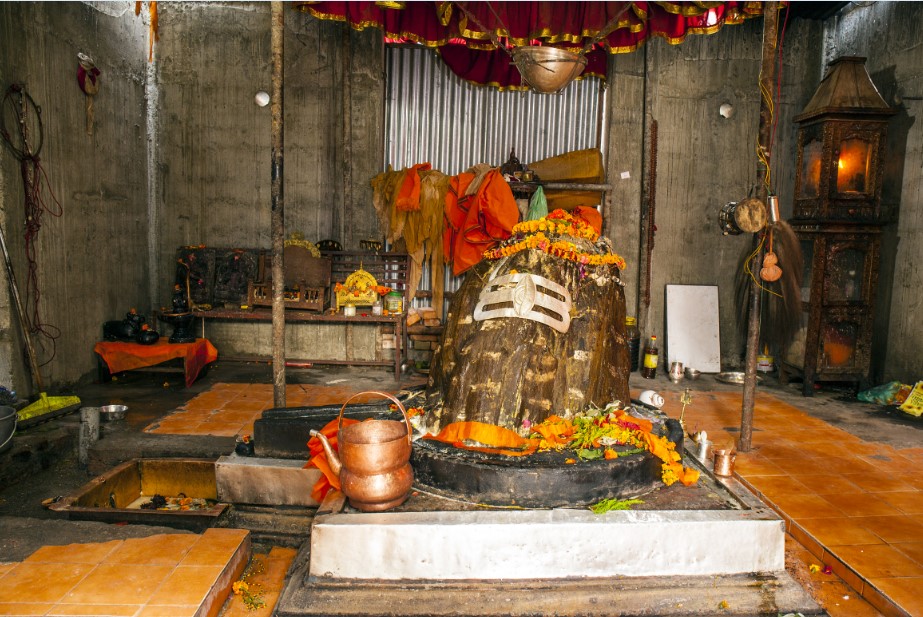 Before eating the bhang, though, I’d also lit a fire with the branches of my jacaranda tree, and sat there watching the fire for a few hours in the night. As I sat there, thoughts of the Green Tara had entered my mind. There was no religious disconnect in my mind, no thoughts about the theological and sectarian divides of Hinduism versus Buddhism. All I could think about was the Green Tara, and all I could see was a green flame dancing on the fire. No wonder then that that green flame that started to dance around the edges seem to become a manifestation of the female Buddha. The more I stared at the fire, the more the green flame leapt and danced, hovering inches over the embers, seemingly not tied to the burning mass, as if it had a life of its own. The more Buddha and Shiva melded into One.
Before eating the bhang, though, I’d also lit a fire with the branches of my jacaranda tree, and sat there watching the fire for a few hours in the night. As I sat there, thoughts of the Green Tara had entered my mind. There was no religious disconnect in my mind, no thoughts about the theological and sectarian divides of Hinduism versus Buddhism. All I could think about was the Green Tara, and all I could see was a green flame dancing on the fire. No wonder then that that green flame that started to dance around the edges seem to become a manifestation of the female Buddha. The more I stared at the fire, the more the green flame leapt and danced, hovering inches over the embers, seemingly not tied to the burning mass, as if it had a life of its own. The more Buddha and Shiva melded into One.
In February 2011, I ended up spending Shivaratri in a more adventurous fashion than I had envisioned. I was in Burma, conducting research on the Nepali diaspora there, and immediately I was surrounded by the buzz of Shivaratri. I was in Lashio, and the people let me know that most of the Nepalis had gone down to Sankhai for the festival. In Pwe Oo Lin, I visited the Pashupatinath Temple (which has a replica of the shivalinga labyrinth and an inscription from King Mahendra who had visited the temple in the 1960s), and while visiting there, I was told I couldn’t meet the priests because they’d gone to Sankhai for the festival. Also in Pwe Oo Lin, I met and interviewed a sprightly Tamang lady from Darjeeling, who told me that I had to get on the train and go to Shankhai for Shivaratri. And, not only was it Shivaratri, but also the 108th year of the founding of the Shiva temple in Shankhai. Obviously, Shankhai was the place to be.
So on Shivaratri, I made my way, rather late in the morning, from Hsipaw to Sankhai on the back of a truck carrying people and goods. I was let go at the edge of a highway. Within a few minutes of inquiry with the volunteers posted at the small shacks, I was able to get a ride with a jovial Punjabi family driving a three-wheeled tempo. The temple was a ten-minute-ride away from the main road. The bubbly Punjabi woman instantly made me feel comfortable, she explained they were carrying kilos of cauliflowers as their family’s contribution to feed the devotees who came from many towns to the festival. The Shivaratri festival was obviously a major community event, involving many sub-continental communities, and with the local Burmese showing up to take part in the festivities.
I went around with the kind Punjabi family, who took me under their wing, and made my way around the various shrines and temples inside the complex. Next, we stood in line for the prasad—it was obvious the prasad was a major part of the festivities, and one for which communities from far and near had contributed money, food, and labor. Some people had gone to the site a month before the event to organize and prepare. So, it was a meal made with labor of dedication and love, with large ladles turning the curry in giant vats. I enjoyed the chatter of large families sitting inside the cavernous, newly built hall, enjoying their most important festival.
The Punjabi family soon found an uncle who spoke Nepali fluently and could tell me a lot more about what was going on. He told me the origin of the Shiva temple. According to the rather mysterious story, the British were building a railway track through the area, when red blood sprouted out of the ground. The workers refused to move, and demanded that a temple be built in the location to appease the spiritual force that had manifested. The railway track had to be diverted to a new location, and the Shiva temple was built. Perhaps, the “red blood” was a mineral deposit, I suggested, but the Punjabi uncle, who said he had mined rubies and red diamonds in different locations in Burma, said there were no gems in this area. Perhaps, the workers knew that the rock was going to be quite hard to break through, and they had planted some blood as an excuse to divert the track—once it became holy ground, it couldn’t be broken apart. Or perhaps, blood had in reality manifested from the ground. Whatever the answer, it was clear that, despite its short origins, the temple was seen as an ancient locus of spiritual power where Shiva had manifested.
The Punjabi uncle told me that a famous Muslim musician always played at the festival. Not only that, but Muslim families also came during the event, put on tika, and ate the prasad. This seemed like an unusual level of engagement with each other’s religious activities, especially in light of the conflictual relationship between Hindus and Muslims in India and Pakistan, but sitting there at the table talking to a Nepali-speaking Punjabi from Burma, it all seemed to make perfect common sense. Of course, the sub-continental Muslims would also come and enjoy this local festival, because community ties were central to life in Myanmar. The food was a central part of the celebration, so everyone, Hindu, Muslim and otherwise, were welcome to eat. As I walked around, I could see Burmese monks in their robes walking around and enjoying the fair-like atmosphere.
Later, Mr. Karki, a community leader from the Gorkhali community, told me that a young man he considered his son from the Shan ethnic group had shown up en masse, with about 200 men, and pledged his support towards the Gorkhali community. Clearly, Shivaratri was an eagerly anticipated space and site, where community ties were renewed, alliances amongst the complicated ethnic tapestry of Burma were pledged and reinforced, and a deep sense of communal sharing was enacted through the Shivaratri prasad/meals.
One of the organizers I interviewed noted that those who volunteered at the festival saw great harmony in their family lives and their levels of prosperity rose after their volunteering experience. This sort of miracle could be attributed more to crafty public relations by a festival organizer than to divine intervention—yet, at the same time, I couldn’t help wondering if those who engaged deeply with these religious events did not, in fact, see a change in their social and familial circumstances. In Nepal, we have lost the Hindu ideas of working for the common good. We no longer remember that building wells and crematoriums, and contributing to the communal good, was once a part of the duties of a practitioner of Sanatan dharma.
The Shivaratri in Burma was also a small miracle for me, personally. In 2002, I’d applied for a fellowship to study the Nepali diaspora in Burma, and been rejected. I’d been flown to Delhi from New York for an interview with the Ford Foundation. Then, I’d flown back to New York within 24 hours. After I had sent off my application in 2010, I received a response from the program administrator in India. He reminded me: “We still have your other application on file.” Human memory is such—or perhaps, my memory is such—that I had forgotten I had sent the same application, to do the same research project, to the very same Foundation, a full eight years ago. Perhaps, the disappointment of rejection, or perhaps, the jet-lag of that transatlantic flight, had been so powerful that all memories of that interview had been erased from my mind. So, when I did receive the fellowship, it seemed divinely ordained, in some ways—I was in Shiva’s temple at Shivaratri on the 108th anniversary of its founding. What could be more auspicious? If I had received the fellowship in 2002, I would have missed this most auspicious date by eight years.


